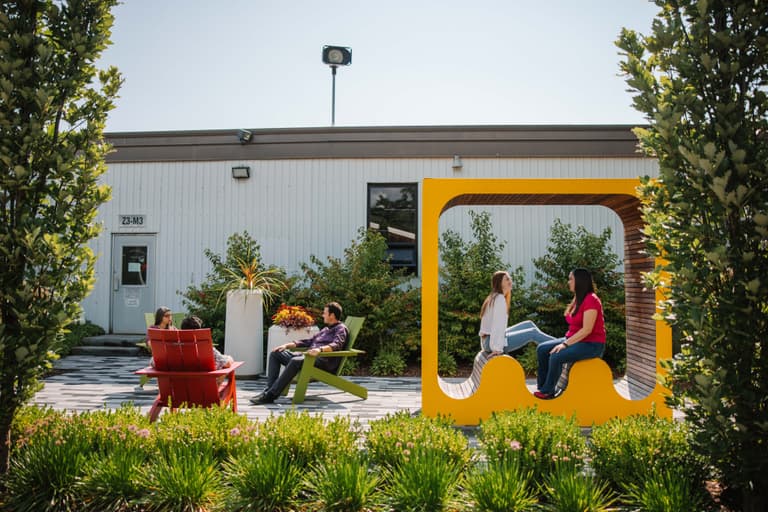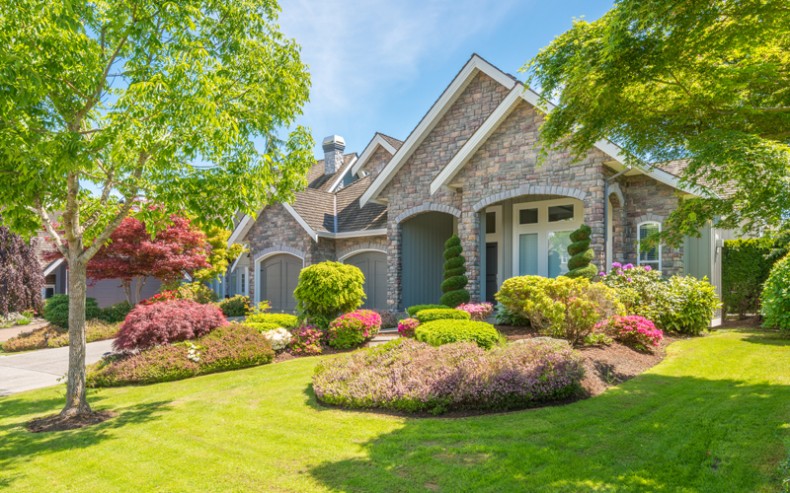See This Report on Hilton Head Landscapes
See This Report on Hilton Head Landscapes
Blog Article
Excitement About Hilton Head Landscapes
Table of ContentsThe Best Guide To Hilton Head LandscapesThe Only Guide for Hilton Head LandscapesUnknown Facts About Hilton Head LandscapesHilton Head Landscapes Things To Know Before You Get ThisThe Best Guide To Hilton Head LandscapesAbout Hilton Head LandscapesThe 4-Minute Rule for Hilton Head LandscapesNot known Incorrect Statements About Hilton Head Landscapes
Kind compatibility is additionally a significant part of unity in designone or more strikingly different types benefit comparison and focus, but normally all various other types should have some similarities for a merged look. Texture describes exactly how rugged or fine the surface of the plant or hardscape material feels and/or looks.
Instances of plants with coarse texture include philodendrons, agaves, bromeliads, hollies, palms, and hydrangeas. Hardscape with coarse structure consists of rough-cut stone, rough-finished block, and unfinished wood with knots and an increased grain. Aged or old building product that preserves a weather-beaten surface is typically coarse in structure. Qualities that develop great texture consist of tiny foliage; slim, strappy leaves (yards) or high, thin stems; little, thick twigs and tiny branches; long stems (creeping plants); and small, delicate flowers.
7 Easy Facts About Hilton Head Landscapes Described
Most plants are average texture, because they can not be defined as having either coarse or great structure. They are identified by medium-sized leaves with basic shapes and smooth edges. The average-sized branches are not densely spaced neither widely spaced, and the total form is generally rounded or mounding. Medium-textured plants act as a history to link and unify the rugged- and fine-textured plants.

To make a space feel smaller, place the crude appearances along the external boundary and the great structures closest to the customer. The information of the coarse structure makes the plants show up closer and makes the area really feel smaller sized. The regarded appearance of plants can additionally transform with the range from the plant.
The Greatest Guide To Hilton Head Landscapes
Bold shades enhance the contrast and make the appearance appear coarser, while low-key colors can squash appearance. Hardscape with a crude texturesuch as really harsh rocks and bold, large timberstends to make all plant material show up a lot more medium distinctive. Designers commonly develop a texture study (Figure 8) on paper to assist determine the setup of plant materials.
Color in plant material and hardscape includes interest and selection to the landscape. Color is the most noticeable component in the landscape and is usually the emphasis of the majority of home owners; nonetheless, it is also the most short-term aspect, normally lasting only a couple of weeks a year for specific plants.
The Only Guide for Hilton Head Landscapes
A basic summary of the color wheel includes the three primaries of red, blue, and yellow; the three additional colors (a mix of two primaries) of eco-friendly, orange, and violet; and 6 tertiary shades (a mix of one adjacent key and additional shade), such as red-orange. Color theory describes the relationship of shades to each various other and how they must be utilized in a make-up.

Similar (in some cases called unified) color pattern are any type of three to five colors that are nearby on the shade wheel, such as red, red-orange, orange, yellow-orange, and yellow, or blue, blue-violet, and violet (bluffton landscaping). The shades belong per other since they usually consist of two main shades mixed to create a secondary and two tertiary colors, which implies they share common residential properties
They often tend to have high comparison between them. The most common collections are violet and yellow, red and eco-friendly, and blue and orange. Corresponding shades are usually located normally in blossoms; a typical pair is yellow and violet. Shade is located in the blossoms, foliage, bark, and fruit of plants.
The Single Strategy To Use For Hilton Head Landscapes
Eco-friendly vegetation in all its numerous shades is the leading shade by amount, however various other colors capture attention more conveniently due to their high comparison to the color eco-friendly. Look At This Color is also found in structures, rocks, pavers, timber, and furnishings. Many shades in natural materials, such as stone and timber, are usually muted and have a tendency to be variations of brownish, tan, and pale yellow.
Shades have properties that can affect emotions, spatial perception, light quality, balance, and focus. Amazing shades tend to be relaxing and should be made use of in areas for relaxation and peacefulness.
The Only Guide to Hilton Head Landscapes
Great colors have a tendency to recede and are viewed as being further away, making a room feel larger. Shade can additionally be used to record attention and direct views.
As an example, bright yellow, which has the greatest intensity, likewise has a high contrast with all various other colors (usually referred to as a "pop" of shade) and need to be conserved. A percentage of intense color has as much visual weight as a big amount of a much more suppressed or weaker shade.
Similar (sometimes called unified) color pattern are any type of 3 to 5 shades that are nearby on the shade wheel, such as red, red-orange, orange, yellow-orange, and yellow, or blue, blue-violet, and violet. The colors relate to every various other since they normally consist of two primaries mixed to form an additional and 2 tertiary colors, which means they share common residential or commercial properties.
Hilton Head Landscapes Things To Know Before You Buy
They often tend to have high contrast between them. The most usual collections are violet and yellow, red and eco-friendly, and blue and orange. Complementary shades are usually discovered naturally in flowers; an usual pair is yellow and violet. Shade is located in the flowers, vegetation, bark, and fruit of plants.
Eco-friendly foliage in all its various tones is the leading color by quantity, however other shades capture attention quicker due to the fact that of their high comparison to the color environment-friendly - landscapers in bluffton sc - https://www.quora.com/profile/Steven-Gonzales-256. Shade is additionally discovered in structures, rocks, pavers, wood, and furniture. Most colors in all-natural products, such as stone and wood, are commonly muted and often tend to be variations of brownish, tan, and pale yellow
The 45-Second Trick For Hilton Head Landscapes
Shade is a vital element for producing interest and range in the landscape. Shades have homes that can influence emotions, spatial understanding, light high quality, equilibrium, and emphasis. One residential property of shade is defined about temperaturecolors seem great or cozy and can influence feelings or sensations. Cool shades have a tendency to be relaxing and need to be used in areas for relaxation and serenity.
The "temperature level" of colors can likewise affect the assumption of range. Trendy shades have a tendency to recede and are perceived as being farther away, making an area feel bigger. Warm shades often tend to advancement and are perceived as being better, making an area feel smaller. Color can additionally be made use of to record focus and direct views.
Brilliant yellow, which has the highest strength, also has a high comparison with all various other shades (often defined as a "pop" of color) and ought to be used sparingly. A small amount of intense shade has as much visual weight as a huge quantity of an extra suppressed or weaker shade.
Report this page